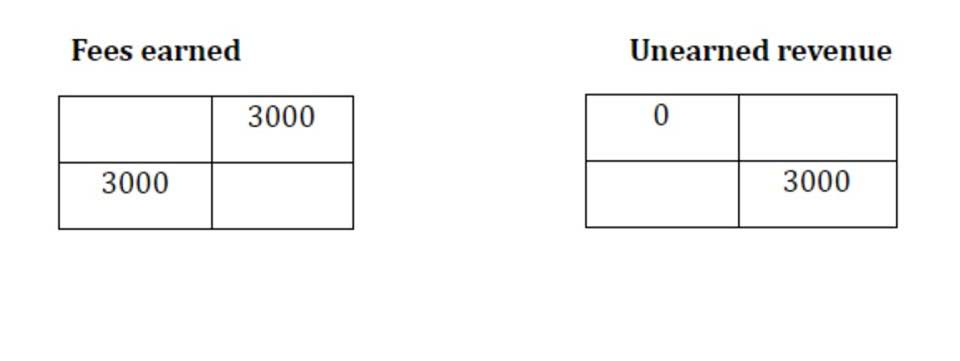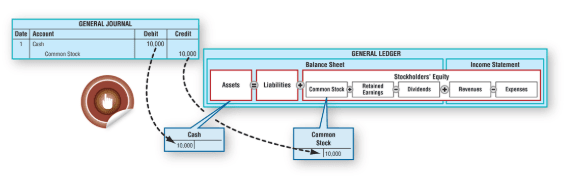
The amount will not tally with that of the initial transaction and subsequent entries made afterwards in the same journal or subsidiary books. If a transaction is recorded in the subsidiary book with the incorrect amount, both the debit and credit entries made subsequently in the ledger will be incorrect accounting errors despite being equal in terms of figures. The type of accounting errors that do not affect the trial balance are summarized in the table below. Errors that affect the trial balance are usually a result of a one sided entry in the accounting records or an incorrect addition. The timing of a correcting entry is typically when an error is discovered, which could be at any point during the accounting period.
How Do I Get My P&L and My Balance Sheet to Balance Out?
- The restatement process requires a retrospective application of the correction, adjusting the balances of the impacted periods as if the error had never occurred.
- These intelligent systems can analyze historical data to detect patterns that deviate from the norm, flagging potential errors for review.
- Any changes or errors in previous financial statements impair the comparability of financial statements and therefore must be addressed appropriately.
- Chartered accountant Michael Brown is the founder and CEO of Double Entry Bookkeeping.
- To comprehend these correcting entries adequately, it’s crucial to understand their definition, identify when they’re needed, and differentiate them from adjusting entries.
- If there are still errors after checking the journal, ledger, subsidiary books, and trial balance totals, then transfer the difference to a temporary account (called a suspense account).
Our work has been directly cited by organizations including Entrepreneur, Business Insider, Investopedia, Forbes, CNBC, and many others. Our team of reviewers are established professionals with decades of experience in areas of personal finance and hold many advanced degrees and certifications. Hence, the rectification should be carried out using a profit and loss adjustment account. Thus, the suspense account is closed after being temporarily created. Sometimes, the balance sheet of the company is window-dressed to paint a picture that is rosier than reality to the shareholders and the public.

Ask Any Financial Question
Nonetheless, you need to know the entry made and the correct entry (a.k.a. « should-be entry ») before you can come up with the correcting entry. The third accounting change is a change in financial statements, which in effect, result in a different reporting entity. This would include a change in reporting financial statements as consolidated as opposed to that of individual entities or changing subsidiaries that make up the consolidated financial statements.

Use Correcting Entries for Mistakes in Your Books

To make the trial balance balance a single entry is posted to the accounting ledgers in a suspense account. The first step is identifying errors in the financial records which may involve oversight, duplication or inaccurately recorded transactions. For instance, if office rent of £1,000 is mistakenly posted as £10,000, it overstates the expenses and understates the profits.
Rectification of Errors FAQs
- Errors in recording accruals and deferrals also often require correcting entries.
- One way to rectify the erroneous entry is to pass a reversal entry by making the second journal entry to rectify the erroneous one and pass the rectified entry.
- Such errors are committed at the management level and not at the clerical level.
- A correcting entry is a journal entry whose purpose is to rectify the effect of an incorrect entry previously made.
- Adherence to these norms is crucial for businesses to enhance their financial transparency, comparability, and credibility, critical for establishing and maintaining stakeholders’ trust.
- The issue is that you can’t spot this mistake in your trial balance—it will still be in balance regardless.
A correcting entry needs to be passed to debit (reduce) the rent expense by £9,000 to reflect the correct position. While both correcting entries and adjusting entries bring accuracy to the accounts, the items they deal with and their timing notably differentiate them. Explore the comprehensive guide on Correcting Entries in the realm of Intermediate Accounting. You’ll delve deeper into the basic definition, identifying when it’s necessary and practical application of these entries. Accounting for Churches Discover the implications and decipher between correcting and adjusting entries.
Finance Strategists has an advertising relationship with some of the companies included on this website. We may earn a commission when you click on a link or make a purchase through the links on our site. All of our content is based on objective analysis, and the opinions are our own. Locating errors is like searching for a black cat in a dark room, all the while wearing sunglasses. However, there are some methods that can make it easier to locate errors.
How Do You Correct Accounting Errors?
- This is done knowing that stock should be recorded in the books at cost or market price, whichever is less.
- For example, if an expense was mistakenly recorded as an asset, a correcting entry would be necessary to reclassify the amount correctly.
- Even with automation and easy-to-use accounting tools, bookkeeping mistakes can happen.
- As it is necessary to close the suspense account, the other aspect of debit or credit of the rectification will affect the suspense account.
- Deferrals help in matching revenues with the expenses incurred to generate them, ensuring that financial statements reflect the true economic activities of the business.
- Correcting entries are essential to ensure that the organization’s financial records are accurate, consistent, and in compliance with accounting principles.
This enables accountants and financial managers to make timely adjustments and corrections, regardless of their location. Collaborative features allow multiple users to work on the same set of books simultaneously, ensuring that any errors are quickly identified and rectified. The integration of these tools with other business systems, such as CRM and ERP software, further streamlines the flow of information, reducing the chances of data entry errors and misclassifications. The main difference between these entries can be seen from the purpose of compiling them. Correcting journal entries are made to correct the error transaction value and to make corrections to the use of incorrect account QuickBooks classification. Meanwhile, adjusting entries are made to provide the latest accounting data that is more accurate.







